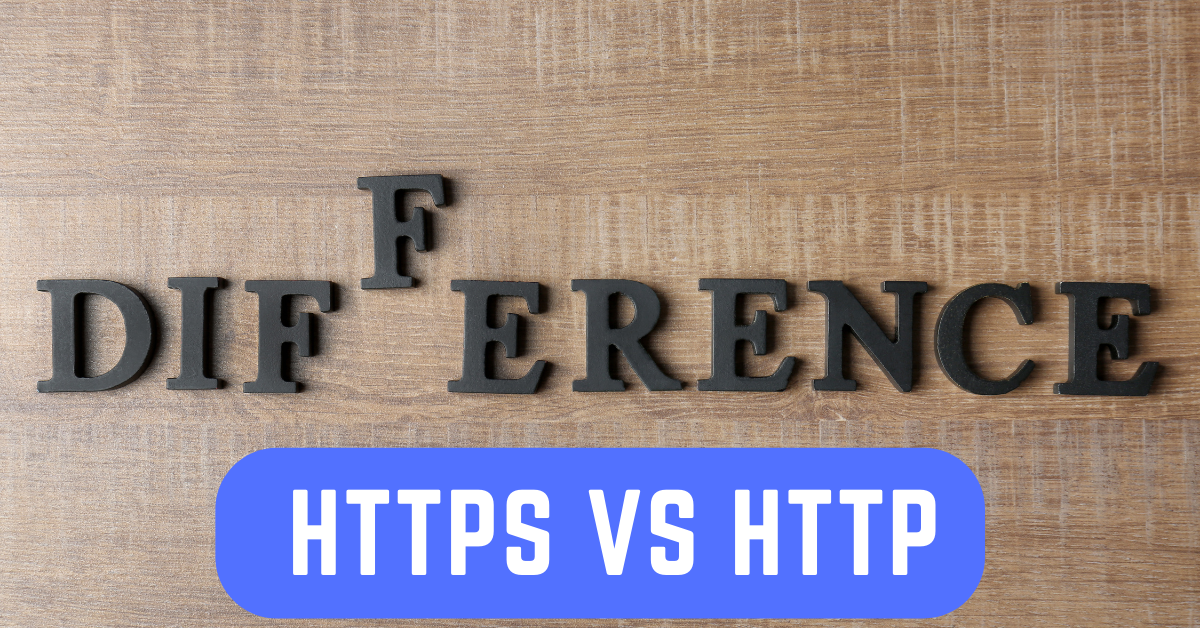Yes, HTTPS does encrypt data. It ensures the security and privacy of data during transmission over the internet. HTTPS encryption is achieved through the use of encryption algorithms and cryptographic keys. When data is sent from a client to a server, it is encrypted using a public key. This encrypted data can only be decrypted by the server’s corresponding private key. This encryption process prevents unauthorized entities from intercepting and accessing the sensitive information being transmitted, making HTTPS a crucial component in data security.
In today’s digital landscape, ensuring the security of data during transmission is of utmost importance. One commonly used protocol for secure data transfer is HTTPS. But does HTTPS really encrypt data? I will be providing the answer to this question and delve into the process of data encryption with HTTPS.
The Need for HTTPS Encryption
When it comes to online communication, there are potential security risks that we need to address. Intermediaries and entities can intercept our data, especially when using public Wi-Fi networks or relying on internet service providers. To protect our information from unauthorized access and eavesdropping, encryption plays a vital role. HTTPS encryption ensures that our data remains confidential and intact during transmission, safeguarding our online interactions.
Why is HTTPS Important?

HTTPS is crucial for maintaining a secure and trustworthy online environment. It provides several key benefits that ensure the privacy, integrity, and security of data transmitted between a user’s device and a website’s server. Without HTTPS, websites are vulnerable to various risks and potential consequences.
The Encryption Process
To understand HTTPS encryption, we must first grasp the concept of public and private keys. The public key encrypts information, while the private key decrypts it. This ensures that only the intended recipient can access and understand the data. Additionally, symmetric encryption keys are used to establish a secure channel between the client and the server, allowing efficient encryption and decryption of messages.
Step-by-Step Encryption Process
- Server Generates Public and Private Keys: During the initial HTTPS configuration, the server generates a public and private key pair.
- Client Receives the Server’s Public Key: The server shares its public key with the client, enabling the client to encrypt data before transmission.
- Client and Server Negotiate a Symmetric Encryption Key: Through public-private key cryptography, the client and server establish a symmetric encryption key that allows them to encrypt and decrypt messages efficiently.
- Client Sends an Encrypted HTTP Request: The client encrypts the request using the negotiated symmetric encryption key, ensuring the privacy and security of the transmitted information.
- Server Decrypts the Request and Sends an Encrypted Response: The server decrypts the encrypted request using its private key and generates an encrypted response to maintain confidentiality.
- Client Decrypts the Response: The client decrypts the response using the symmetric encryption key, allowing the interpretation and utilization of the received information.
An Analogy to Understand HTTPS Encryption
To better understand the encryption process, let’s consider an analogy. Imagine locking confidential information in a box using a unique symmetric key and sending it to the server. The server possesses a special box that can only be opened using a private key. By placing the original box and symmetric key inside the special box, locking it with the server’s public key, and sending it, we securely share the symmetric key with the server. This allows for subsequent exchange of data using normal boxes without the need to share the symmetric key again.
Difference Between HTTP and HTTPS

HTTP, which stands for Hypertext Transfer Protocol, sends data in plain text, making it vulnerable to interception by attackers. On the other hand, HTTPS (Hypertext Transfer Protocol Secure) incorporates security features to protect transmitted data. By encrypting information before transmission, HTTPS ensures that sensitive details, such as names, addresses, credit card numbers, and passwords, are not easily accessible to unauthorized individuals. You can identify whether a website is using HTTPS by looking for the lock icon in the address bar.
The Impact and Adoption of HTTPS
Recognizing the importance of HTTPS encryption, Google made it a ranking signal in 2014. It has become a crucial aspect of website ranking and falls under Google’s page experience signals. This shift has prompted website owners to prioritize HTTPS adoption, increasing awareness of internet security. Users are encouraged to choose websites with HTTPS encryption to ensure their data’s safety during online interactions.
How Safe is HTTPS Encryption?

HTTPS encryption plays a crucial role in ensuring the security and privacy of our data during online interactions. Let’s delve into the safety aspects of HTTPS encryption and understand why it is considered a robust method for protecting sensitive information.
- Data Confidentiality: HTTPS encryption ensures that the data transmitted between a client and a server remains confidential. By encrypting the information, it becomes incomprehensible to unauthorized entities attempting to intercept or access it. This encryption prevents sensitive details, such as personal information, credit card numbers, and passwords, from being easily readable or exploited by attackers.
- Encryption Strength: HTTPS employs strong encryption algorithms that make it highly secure. The most commonly used encryption protocols are Transport Layer Security (TLS) and its predecessor, Secure Sockets Layer (SSL). These protocols utilize cryptographic algorithms to encrypt the data, making it extremely difficult for malicious actors to decipher the encrypted information without the corresponding decryption key.
- Secure Key Exchange: HTTPS utilizes asymmetric encryption (public-private key cryptography) to establish a secure channel between the client and the server. This process allows the secure exchange of encryption keys, ensuring that only the intended recipient can decrypt the data. By employing this key exchange mechanism, HTTPS guarantees that the communication remains secure even if an attacker manages to intercept the encrypted data.
- Integrity Verification: HTTPS includes mechanisms for verifying the integrity of the transmitted data. It utilizes digital certificates issued by trusted Certificate Authorities (CAs) to verify the authenticity of the server. This process ensures that the data received from the server has not been tampered with or modified during transmission. Any unauthorized modification of the data would result in a failed integrity check, alerting the client to potential tampering attempts.
- Protection against Man-in-the-Middle Attacks: HTTPS encryption provides protection against man-in-the-middle (MITM) attacks, where an attacker intercepts the communication between the client and the server. With HTTPS, even if an attacker manages to intercept the encrypted data, they would be unable to decipher its contents without the encryption key. This adds an additional layer of security and prevents unauthorized access to sensitive information.
- Ongoing Security Improvements: The security of HTTPS encryption is constantly evolving to address emerging threats and vulnerabilities. The cryptographic algorithms used in HTTPS are regularly updated to ensure they remain resistant to attacks. Additionally, browser vendors and major technology companies actively collaborate to identify and mitigate security vulnerabilities, further enhancing the overall safety of HTTPS encryption.
While HTTPS encryption provides robust security measures, it is important to note that no system is completely immune to vulnerabilities. It is crucial to keep systems and software up to date, regularly review and update security configurations to maintain a high level of security.
The Risks and Consequences of Websites Without HTTPS Encryption
When a website doesn’t have HTTPS, the following issues may arise:
- Lack of Data Confidentiality: Without HTTPS encryption, data transmitted between the user and the website is sent in plain text, making it susceptible to interception and eavesdropping. Attackers can easily capture sensitive information, such as login credentials, credit card details, or personal information, as it travels across the internet.
- Data Tampering and Manipulation: In the absence of HTTPS, malicious actors can manipulate the data being transmitted between the user and the website. They can modify the content of web pages, inject malicious scripts or malware, or alter form submissions, leading to potential data breaches, unauthorized access, or the compromise of user trust.
- Identity and Phishing Attacks: HTTPS provides a mechanism for verifying the authenticity of a website through digital certificates issued by trusted Certificate Authorities (CAs). Without HTTPS, attackers can impersonate legitimate websites, trick users into entering sensitive information on fraudulent pages, or launch phishing attacks to steal credentials or spread malware.
- Search Engine Ranking and User Trust: Major search engines, such as Google, prioritize websites with HTTPS in their search results, as it signifies a secure browsing experience. Websites without HTTPS may experience lower search rankings, impacting their visibility and credibility. Users are also becoming more aware of security risks, and the absence of HTTPS may deter them from engaging with a website or sharing sensitive information.
- Compliance and Regulatory Requirements: Many industries and regions have specific data protection and privacy regulations that require the implementation of HTTPS encryption. Without HTTPS, websites may fail to meet these compliance requirements, exposing themselves to legal repercussions and potential fines.
HTTPS is essential for protecting user data, maintaining data integrity, establishing trust, and complying with industry standards and regulations. Websites without HTTPS are at risk of data breaches, identity theft, loss of user trust, and potential legal consequences. Implementing HTTPS encryption is a crucial step for website owners and organizations to ensure the security and privacy of user interactions.
Securing Your Internet Connection
In both wireless and wired connections, vulnerabilities exist that can compromise data security. Eavesdropping and wiretapping are potential threats to our sensitive information. Encrypting our data is crucial to mitigate these risks and ensure the privacy of our online communication. HTTPS encryption plays a pivotal role in safeguarding our internet connections.
Key Takeaways:
- HTTPS encrypts data during transmission, providing an extra layer of security.
- It uses encryption algorithms and cryptographic keys to protect sensitive information.
- Public and private keys are utilized for encrypting and decrypting data.
- The encryption process prevents unauthorized entities from intercepting and accessing data.
- HTTPS is crucial for maintaining the privacy and integrity of data.
Frequently Asked Questions
Is HTTPS the same as encryption?
No, HTTPS is a protocol that utilizes encryption to secure data transmitted between a client and a server.
How safe is HTTPS encryption?
HTTPS encryption significantly enhances the security of data during transmission, making it difficult for unauthorized entities to access or interpret the information.
Does HTTP use data encryption?
No, HTTP does not employ encryption, leaving data transmitted via HTTP vulnerable to interception and unauthorized access.
Can my internet connection be tapped like a telephone line?
Yes, both wireless and wired internet connections can be tapped, making encryption vital to protect the privacy and security of data.
How does HTTPS ensure the security of my data?
HTTPS encrypts data before transmission, making it incomprehensible to unauthorized individuals attempting to intercept or access the information.
Conclusion
To protect our sensitive data and maintain the privacy of our online communications, HTTPS encryption is of paramount importance. By encrypting data during transmission, HTTPS ensures that our information remains confidential and secure. It is essential for individuals and organizations alike to prioritize HTTPS encryption, fostering a safer and more trustworthy online environment.
